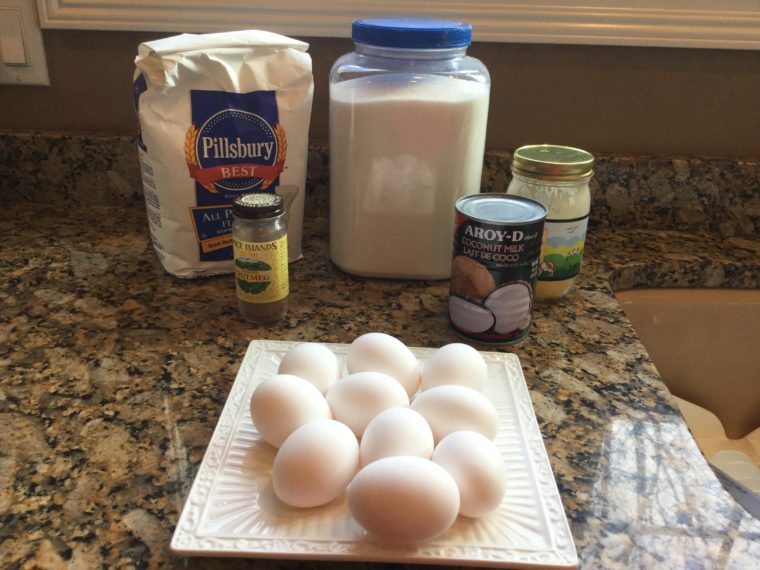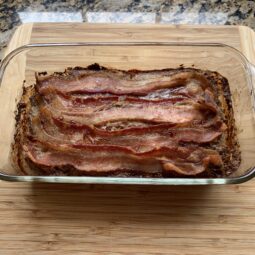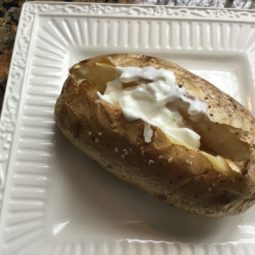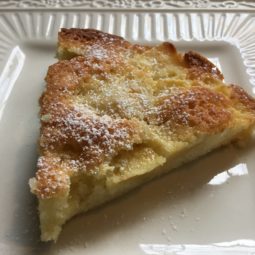Bebinca
Bebinca is a classic Goan Christmastime sweet.
The prep time for bebinca is super quick but plan for about three hours to bake completely. I learned this the hard way and ended up being awake until the wee hours finishing it.
The first layer of this dessert is baked and then broiled but each subsequent layer is broiled individually. That said, you will need to keep a close eye on it to make sure the layers turn gold brown but do not burn. In order to showcase this dessert, you will want as many layers as possible – more on this coming up. It is also important to have some color on the top surface of each layer so that the layer shows when you slice the final product cross-wise. Furthermore, you should aim for consistent color across layers, as this will also show through when cut. However, this is easier said than done. Particularly when broiling, each layer can brown unevenly and turn too dark fast.
Use a uniform pan versus one that has sides that flare out and use a measuring cup so that all your layers are equally thick. Another tip is to use the measure your batter and pour exactly as much as you need to cover the bottom. Also, the more layers the better so make the layers as thin as possible – they will puff up slightly as they bake. Pour out just enough batter and then tilt from side to side to coax the batter to the edges. For my loaf pan (which is a regular, not a wide pan), I use about 1/2 cup of batter. Doing so yields about 15 layers.
Bebinca slices best when cold. To slice, cut thin slices. Trim off any angled edges and cut each slice in half. Place on a serving platter. Cover with cling wrap. Serve at room temperature.
What You’ll Need to Make Bebinca
How to Make Bebinca
Preheat the oven to 350F. Position a rack above center, closer to the broiler.
In a stand mixer fitted with a paddle attachment, beat the eggs yolks and sugar.
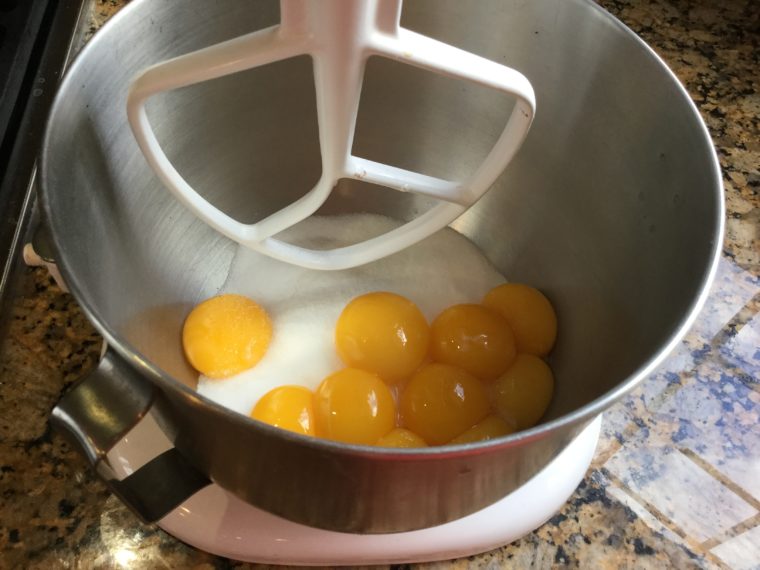
Next, alternate adding the flour and coconut milk. Note: Make sure to shake the can well before opening as the coconut mild tends to separate. Lastly, add the nutmeg. The batter will be smooth and relatively thin.
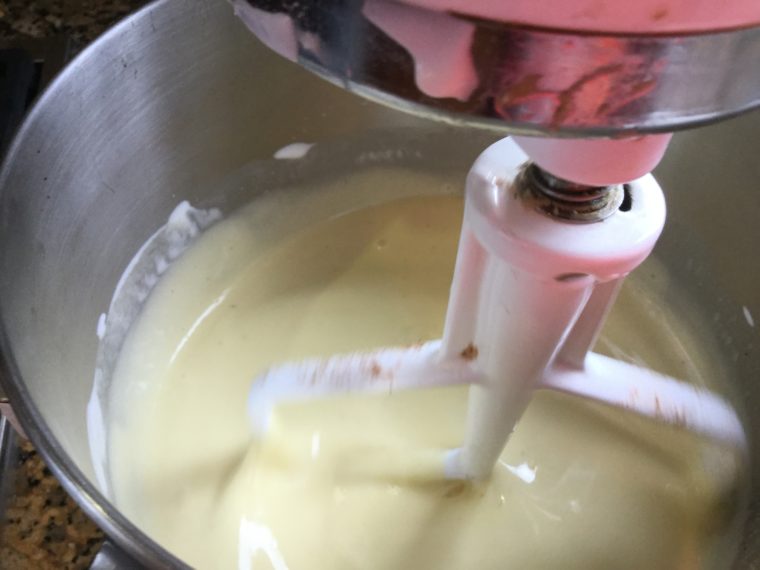
Melt about a quarter cup of ghee in a small saucepan on low heat.

Brush the melted ghee on the bottom and sides of a loaf pan.
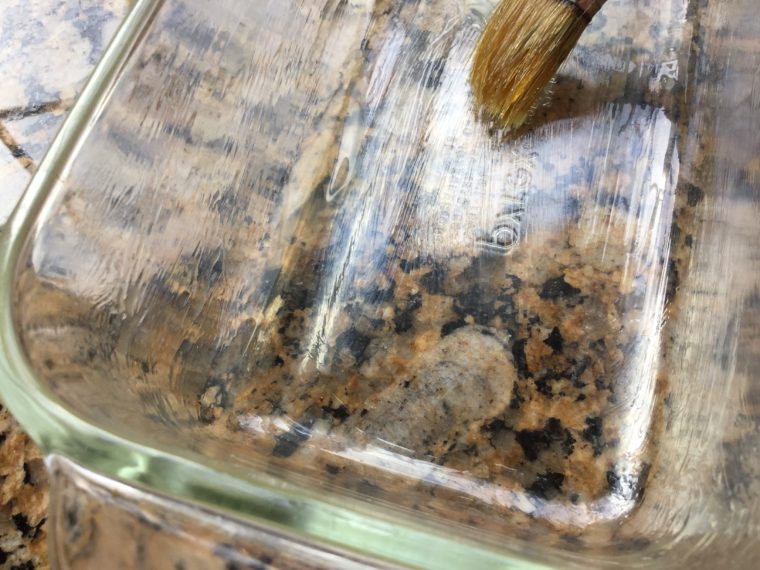
Pour about ½ cup of the mixture into the loaf pan. You want to make sure to use a measuring cup so that all your layers are equally thick. I also like to make the layers as thin as possible, so I pour out just enough and then tilt from side to side to coax the batter to the edges. Doing so yields about 15 layers.
Bake for about 15 minutes til firm.
Then turn on the broiler and broil to a golden brown.
Remove the bebinca from the oven and brush the surface with melted ghee.
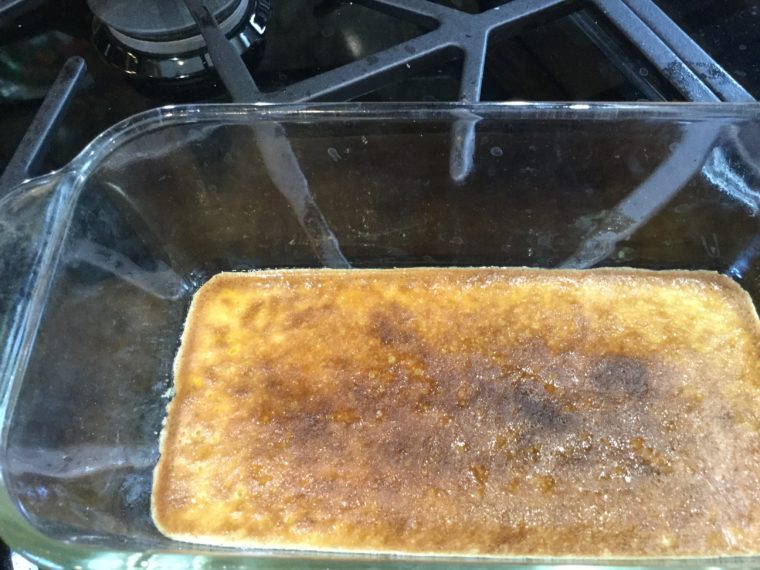
Using a half cup measure pour out just enough and then tilt from side to side to coax the batter to the edges. Broil until golden brown.
Remove the bebinca from the oven and brush the surface with melted ghee.
Repeat the steps for all the remaining layers.
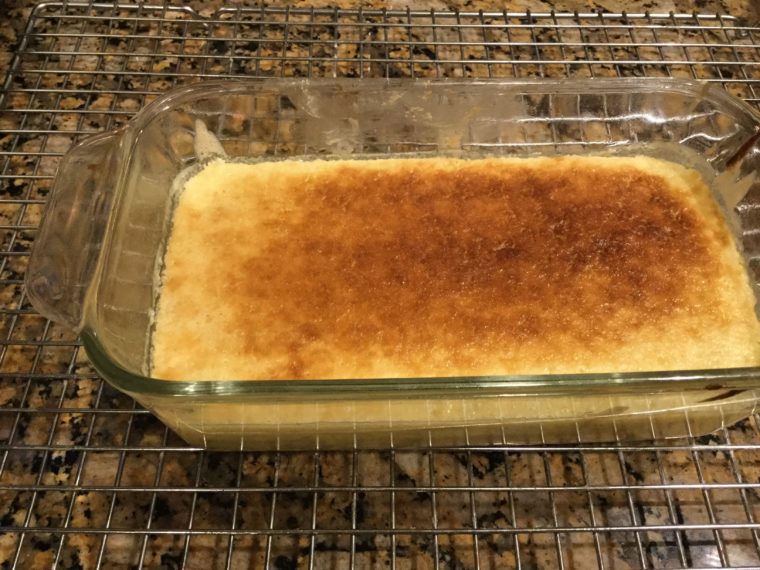
Note that as your layers get closer to the broiler your browning time will reduce, so be sure to watch out for your layers not getting to brown.
Once you have baked the last layer, remove the bebinca from the oven and brush with ghee. Allow it to cool in the loaf pan on a wire rack. Once it is completely cool, run a knife around the edge and invert carefully.
You can wrap the bebinca in plastic wrap and store in the fridge.
Bebinca slices best when cold. To slice, cut thin slices. Trim off the angled edges and cut each slice in half. Place on a serving platter. Cover with cling wrap. Serve at room temperature.
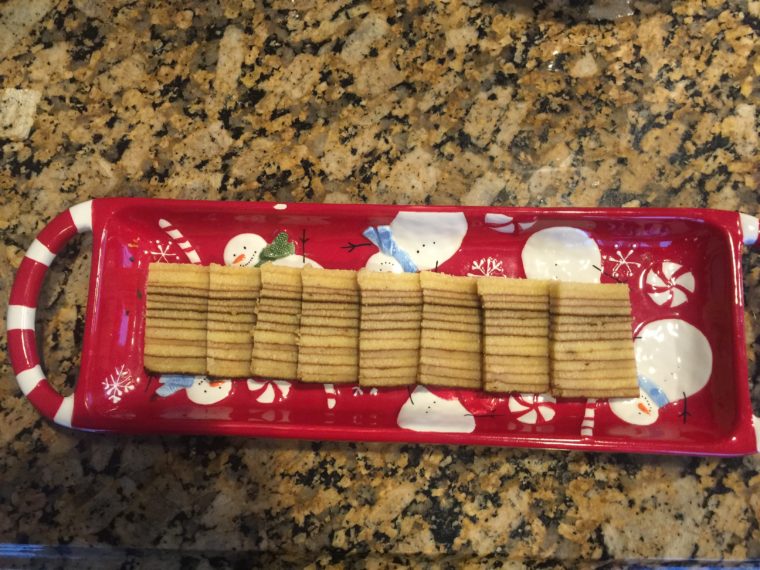
Ingredients
- 10 egg yolks
- 2 1/2 cup sugar
- 1 5/8 cup flour
- 14 oz can of coconut milk I use Arroy-D
- 1/4 tsp nutmeg
- 1/2 cup ghee
Instructions
- Preheat the oven to 350F. Position a rack above center, closer to the broiler.
- In a stand mixer fitted with a paddle attachment, beat the eggs yolks and sugar.
- Alternate adding the flour and coconut milk. Note: Make sure to shake the can well before opening as the coconut mild tends to separate.
- Lastly, add the nutmeg.
- Melt about a quarter cup of ghee in a small saucepan on low heat.
- Brush the melted ghee on the bottom and sides of a loaf pan. Pour about ½ cup of the mixture into the loaf pan. You want to make sure to use a measuring cup so that all your layers are equally thick. I also like to make the layers as thin as possible, so I pour out just enough and then tilt from side to side to coax the batter to the edges. Doing so yields about 15 layers.
- Bake for about 15 minutes til firm.
- Then turn on the broiler and broil the first layer to a light golden brown.
- Remove the bebinca from the oven and brush the surface with melted ghee.
- Using a half cup measure pour out just enough and then tilt from side to side to coax the batter to the edges. Broil until golden brown.Remove the bebinca from the oven and brush the surface with melted ghee.
- Repeat the steps for all the remaining layers.
- Note that as your layers get closer to the broiler your browning time will reduce, so be sure to watch out for your layers not getting to brown.
- Once you have baked the last layer, remove the bebinca from the oven and brush with ghee. Allow it to cool in the loaf pan on a wire rack. Once it is completely cool, run a knife around the edge and invert carefully. Wrap the bebinca in plastic wrap and store in the fridge.
- Bebinca slices best when cold. To slice, slice thin slices. Cut off the angled edges and cut each slice in half. Place on a serving platter. Cover with cling wrap. Serve at room temperature.
Nutrition Information Disclaimer
Ginny’s Recipe Collection provides nutritional breakdowns for informational purposes only. The data on this site has not been evaluated and approved by the Food and Drug Administration (FDA). The data is calculated using an online 3rd party nutritional calculator. Therefore these figures should be considered as estimates only. Online calculators may yield different results based on their own nutritional fact databases and algorithms they use. Furthermore, varying factors such as product types, adjustment of seasonings, natural variation in produce, and the manner in which they are processed may affect the final nutritional information. To get the most accurate analysis, please consult a registered dietician.
© Ginny's Recipe Collection


